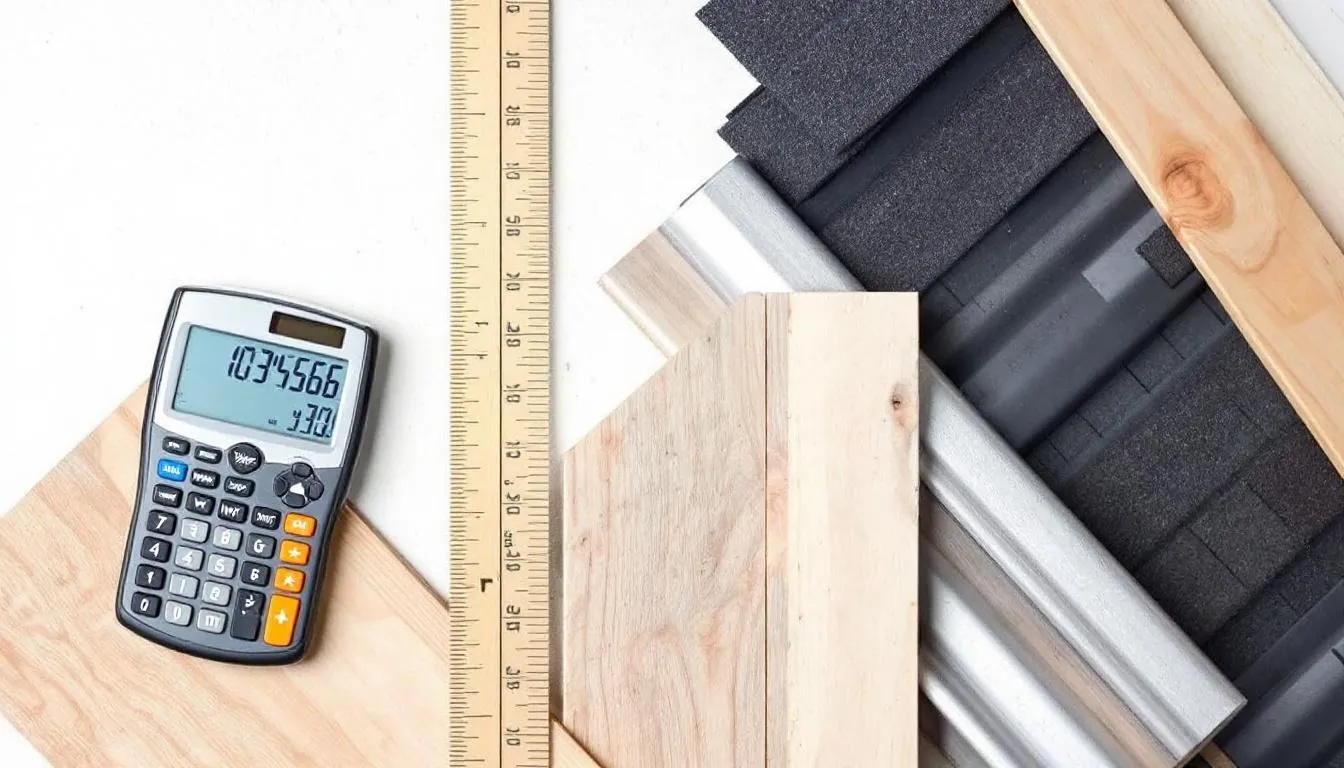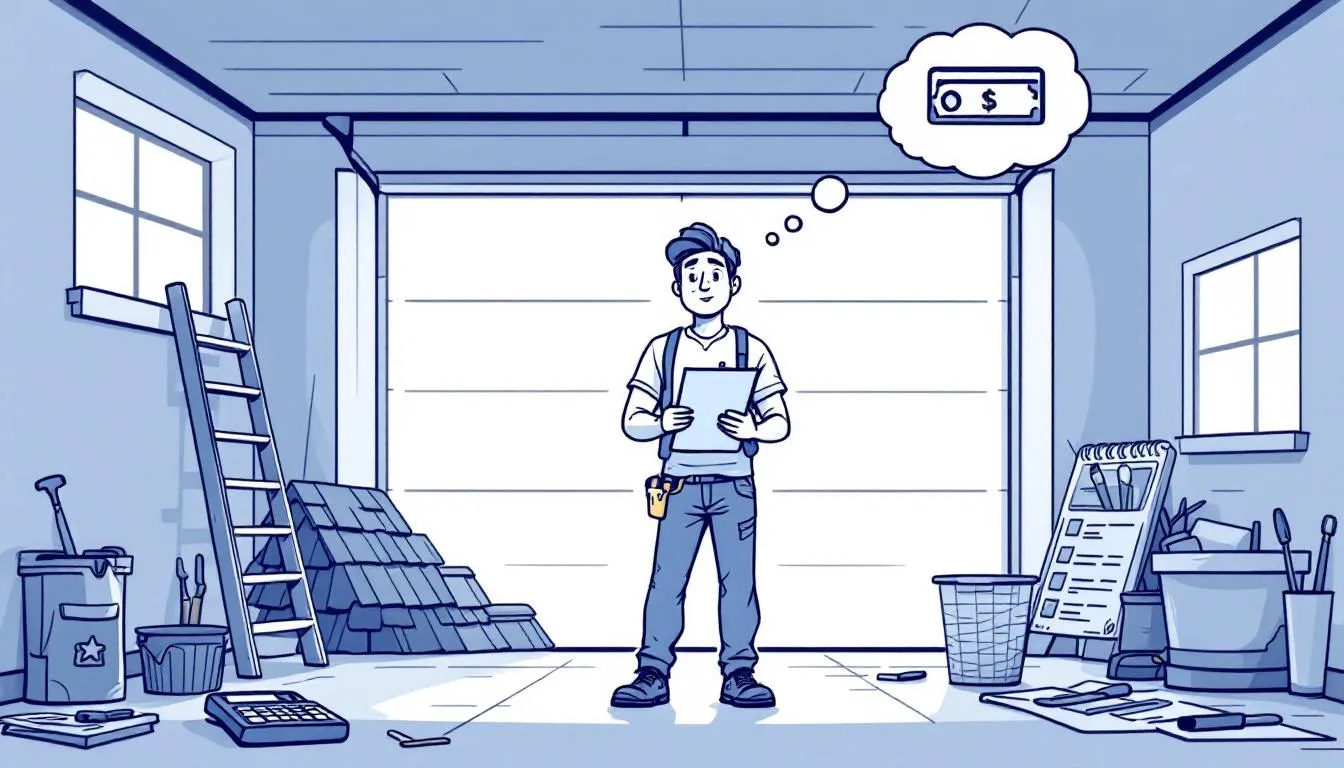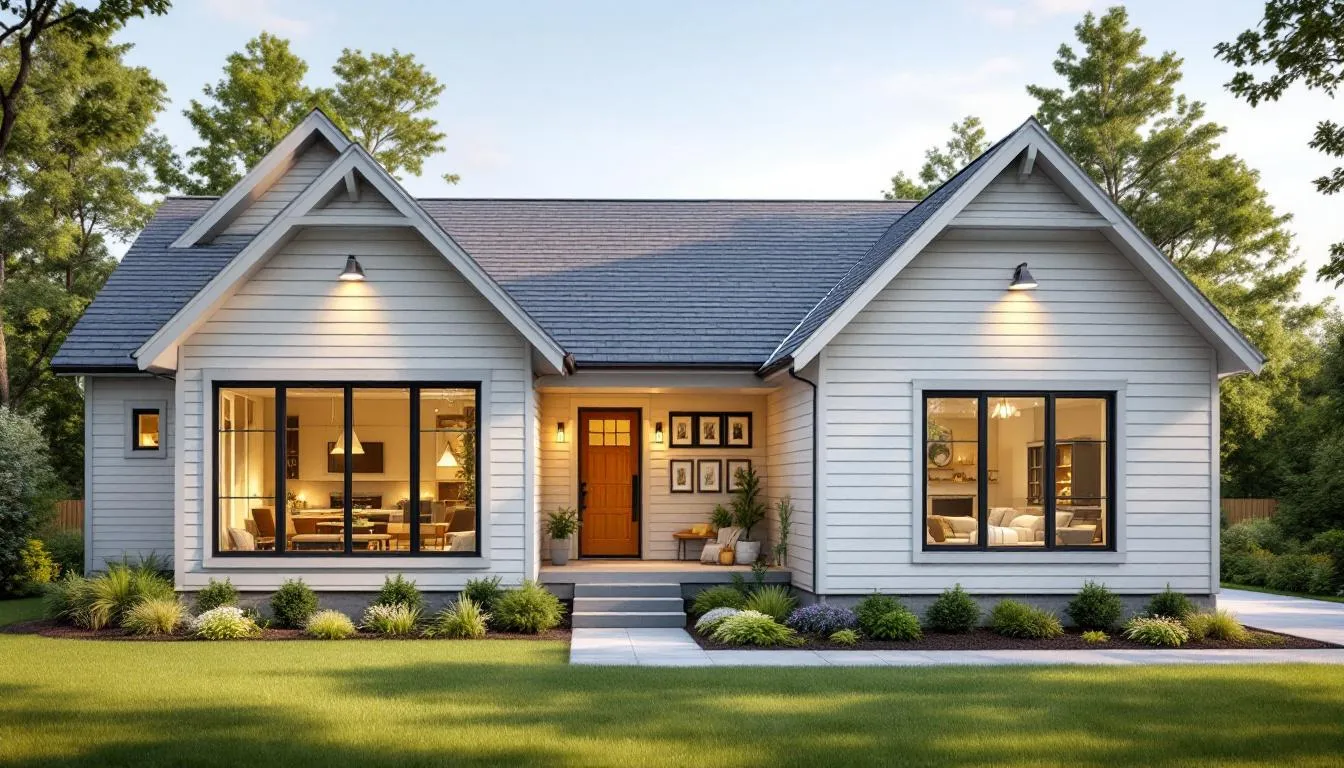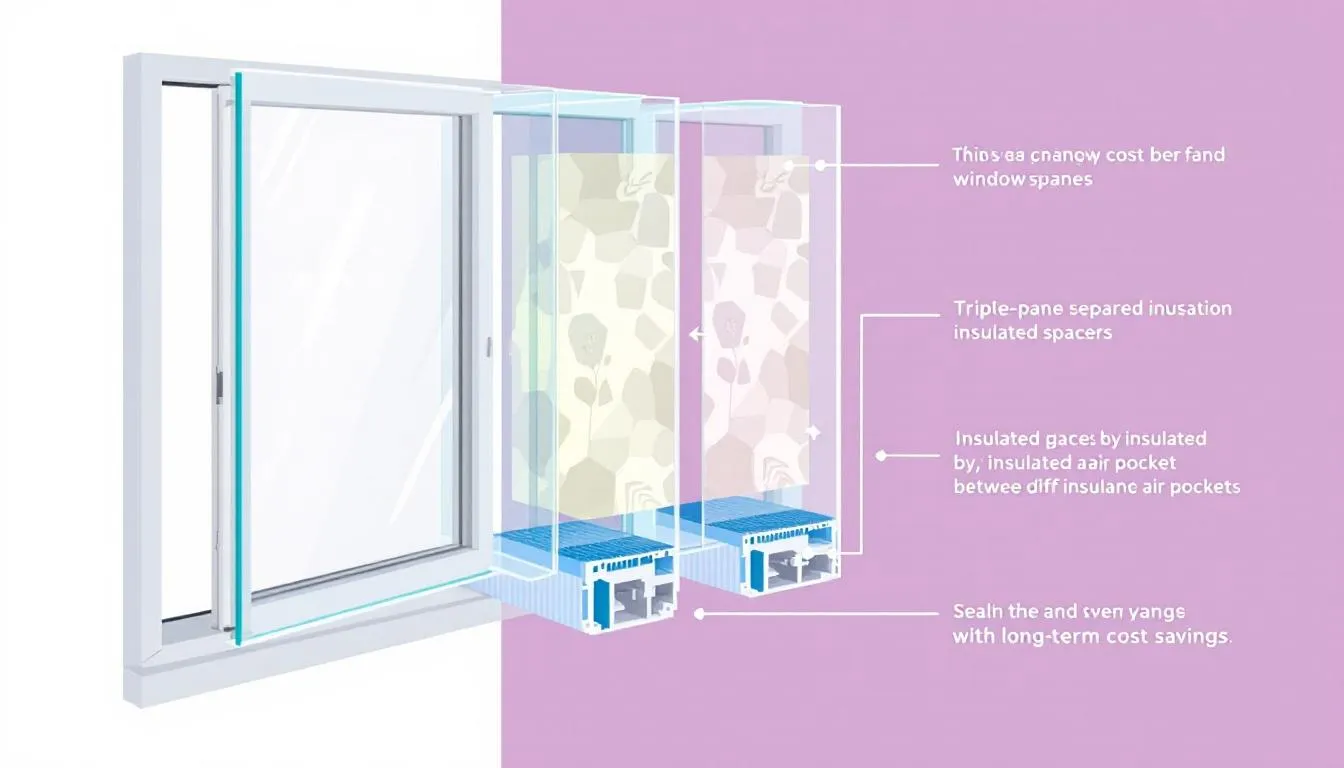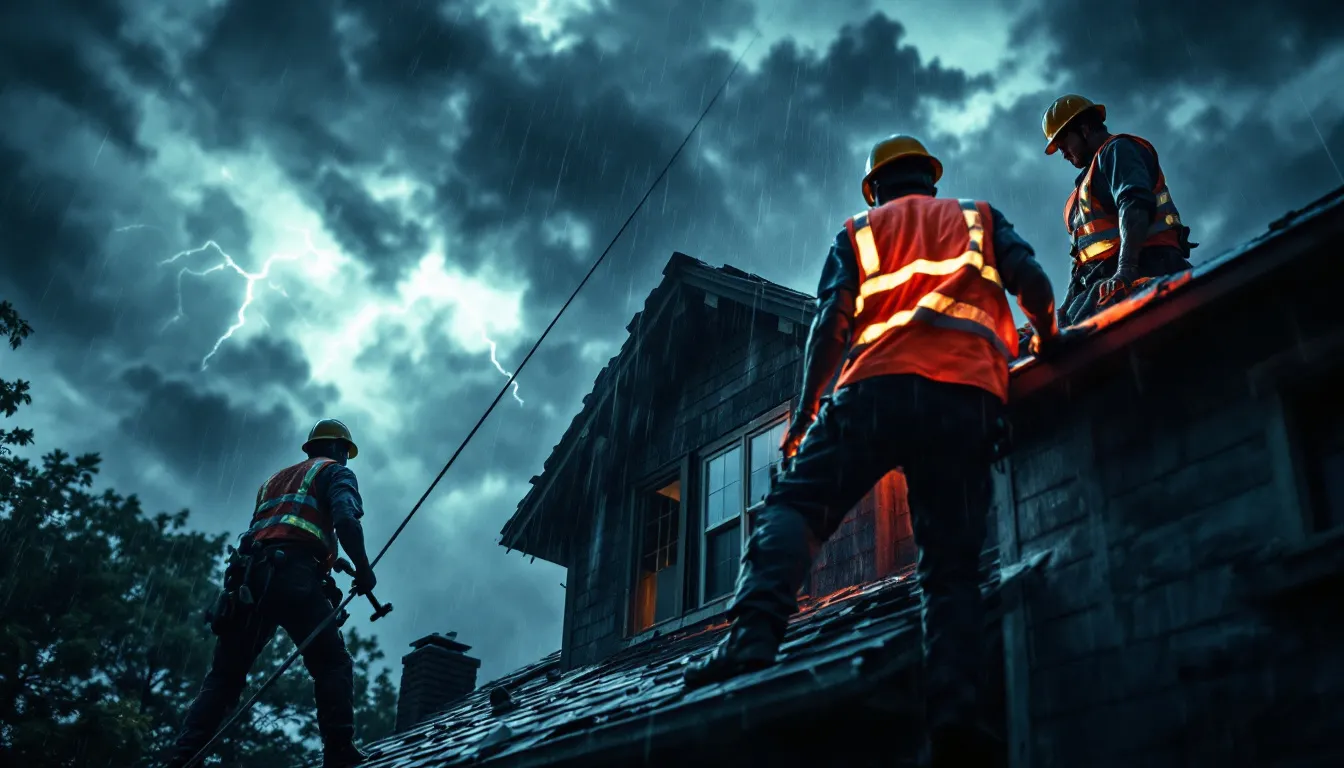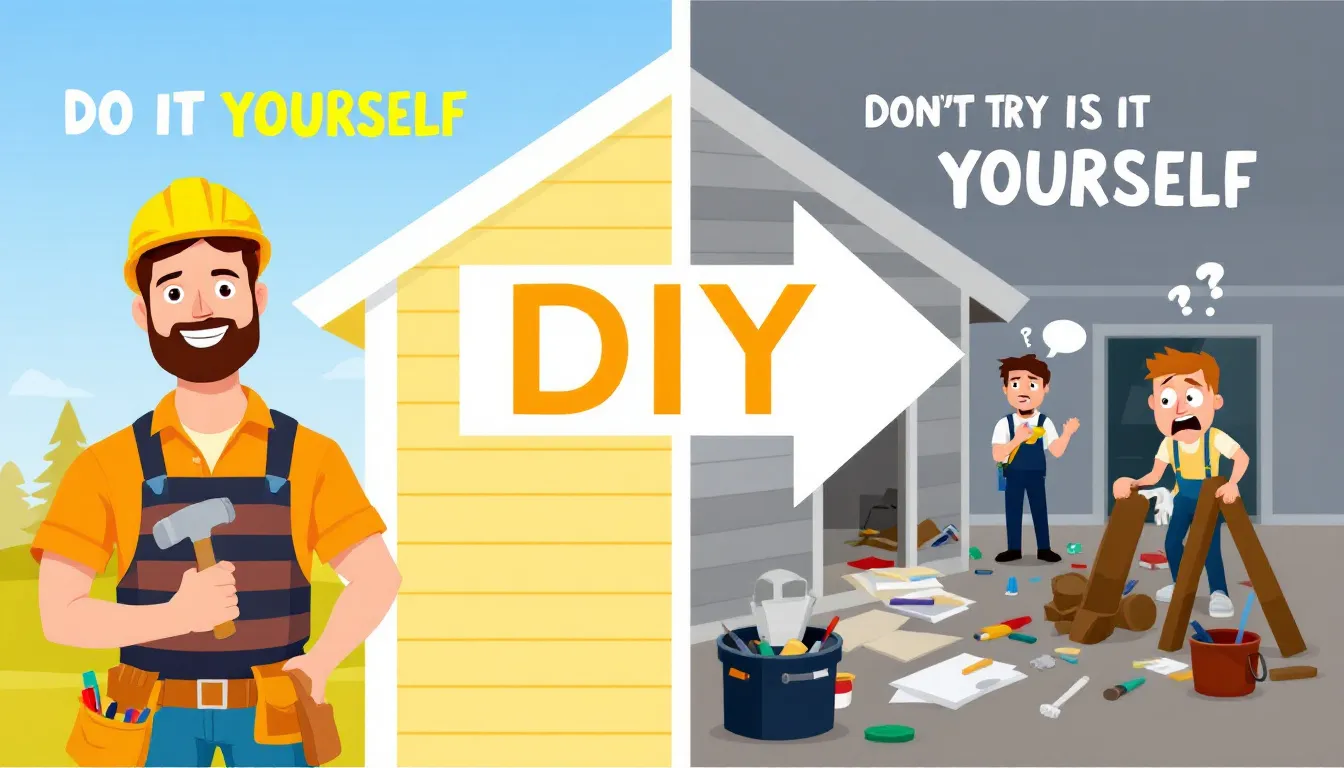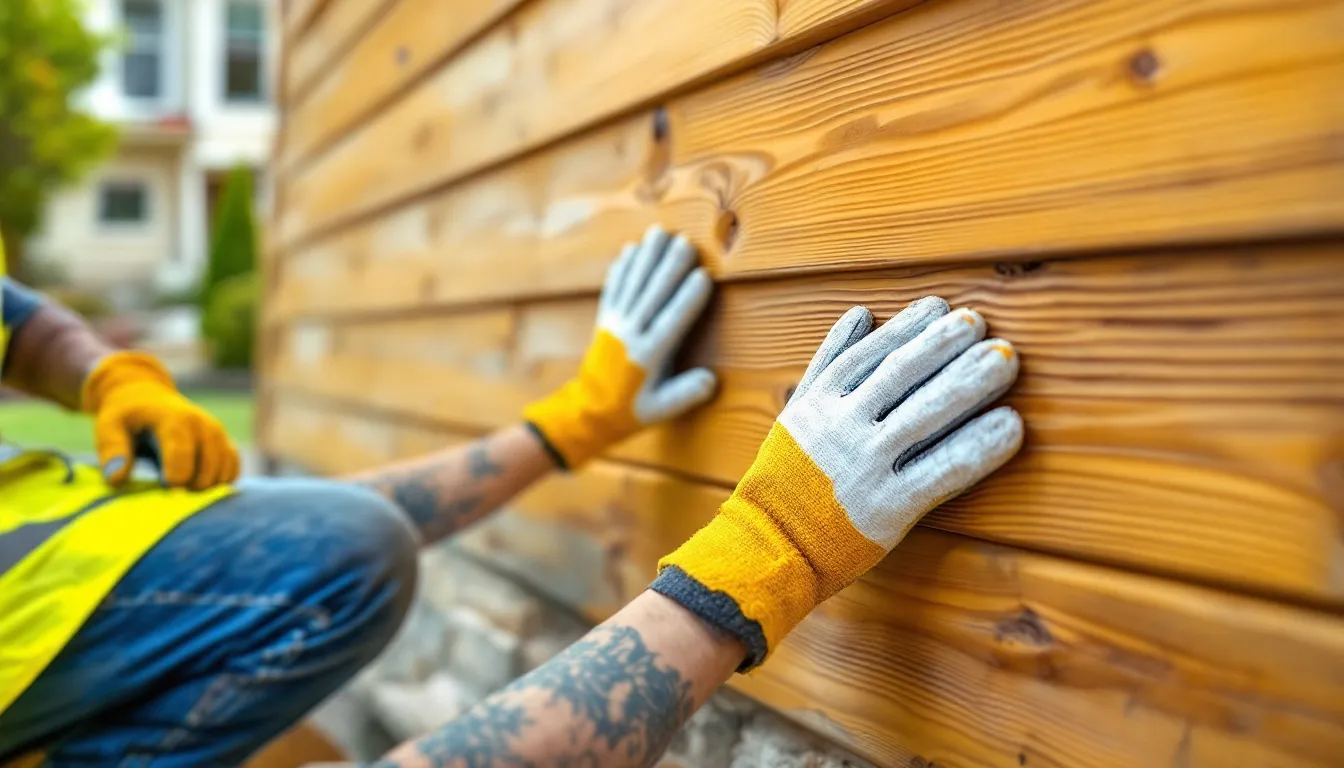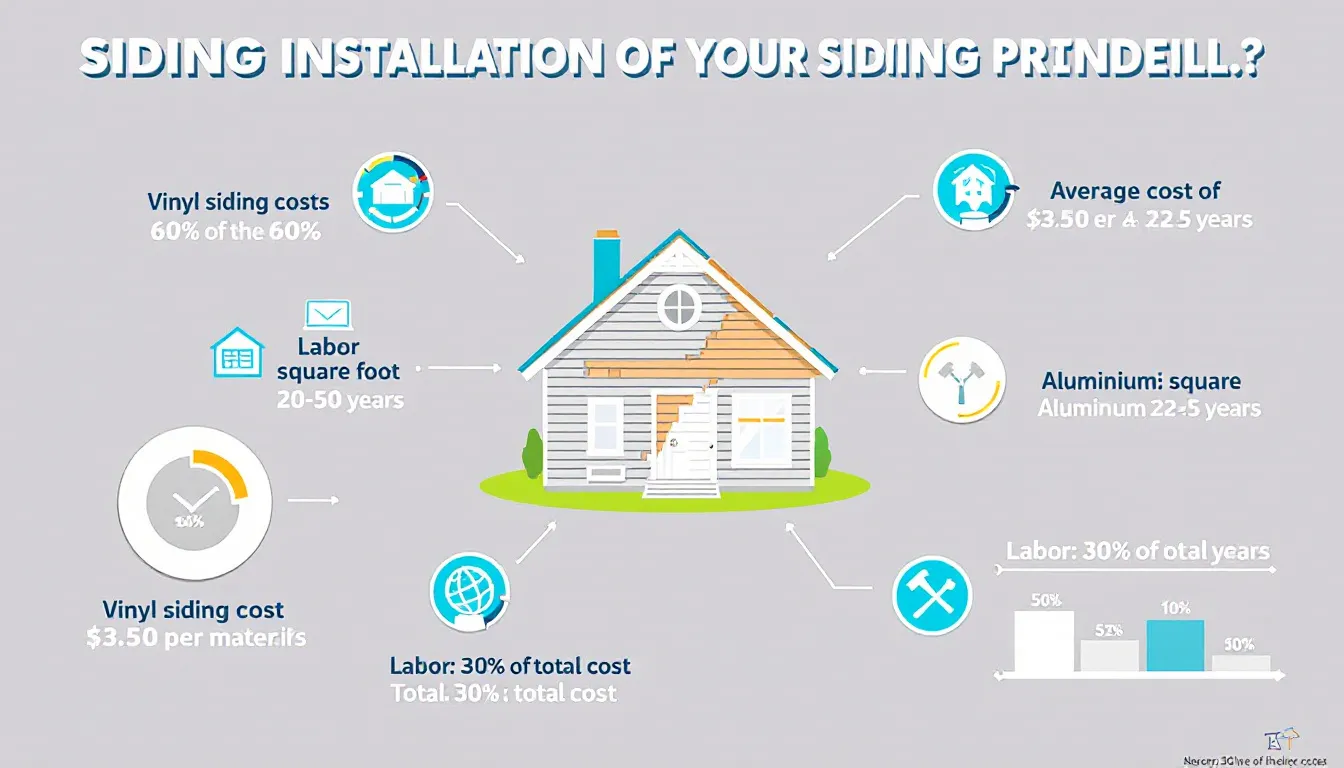Understanding the Insulated Vinyl Siding Cost: What to Expect
Considering insulated vinyl siding for your home? The main cost components, including insulated vinyl siding cost, consist of materials, generally $3 to $8 per square foot, and labor, typically between $1 and $3 per square foot. Knowing these expenses helps in planning your budget effectively.
Key Takeaways
- Insulated vinyl siding costs range from $4 to $11 per square foot for total installation, influenced by material choice and labor expenses.
- Factors impacting costs include type and quality of siding, home size and design, and geographic location, with labor often comprising half of total expenses.
- While initially pricier than traditional vinyl siding, insulated options offer long-term savings through improved energy efficiency and durability, making them a worthwhile investment.
Insulated Vinyl Siding Cost Overview
Insulated vinyl siding is a cost-efficient option for homeowners looking to enhance their home’s energy efficiency and aesthetics. The material costs for insulated vinyl siding generally range from $3 to $8 per square foot, depending on the brand and insulation value.
Labor costs for installing insulated vinyl siding typically range from $1 to $3 per square foot, influenced by the complexity of the installation and local labor rates. When combined, the total installation costs for insulated vinyl siding range from $4 to $11 per square foot.
Material Costs
The prices for insulated vinyl siding materials vary significantly, generally falling between $1.25 and $2.50 per square foot for different brands. This range reflects the diverse options available, from basic to premium products, each offering different levels of insulation and durability. The total cost of your project will depend heavily on the materials you choose, with higher-end options providing better performance and longer lifespans but at a higher cost.
It’s important to consider the multiple factors that can affect material costs, including the type and thickness of the foam insulation. Thicker insulation not only improves energy efficiency but also increases the overall price due to its enhanced durability and performance.
Investing in higher-quality materials means your new siding will last longer and need less maintenance, ultimately saving you money over time.
Labor Costs
Labor costs for installing insulated vinyl siding generally range from $1 to $3 per square foot. These costs can vary based on factors such as home accessibility, the complexity of the installation, and seasonal demand for contractors.
Labor makes up a significant portion of the total cost, but it’s not an area to cut corners. Skilled labor ensures correct installation, maximizing benefits and longevity.
Total Installation Costs
When combining materials and labor, the total cost for installing insulated vinyl siding averages around $14 per square foot. This means that for an average-sized home, the overall cost can range from approximately $6,000 to $20,000, depending on factors like home size and location.
Getting detailed quotes from contractors helps you understand all costs involved, including additional expenses for removing old siding and obtaining necessary permits.
Factors Influencing Insulated Vinyl Siding Costs

Several factors can influence the cost of insulated vinyl siding installation:
- Labor expenses typically comprise about half of the total costs.
- The type and quality of siding.
- The size and design of your home.
- Your geographic location.
These factors pay significant roles in determining the overall expenses.
Being aware of these factors helps you make informed decisions and manage your budget effectively.
Type and Quality of Siding
The type and quality of the siding you choose significantly impact the overall cost of your project. Here are some key points about high-quality insulated vinyl siding and TimberCrest™ insulated vinyl siding:
- High-quality insulated vinyl siding has thicker and more durable foam insulation.
- It generally costs more but offers better energy efficiency and durability.
- TimberCrest™ insulated vinyl siding is molded from real rough cedar planks.
- It has a thickness of .046 inches.
- It is designed to provide enhanced impact resistance.
- This superior quality improves the aesthetic appeal of your home.
- It ensures long-lasting performance, making it a worthwhile investment.
Choosing a higher-quality product may involve a higher initial cost, but the benefits include:
- Improved insulation and durability, leading to significant savings over time
- Thicker foam insulation that enhances energy efficiency by better maintaining indoor temperatures and adds insulation
- Reduced heating and cooling bills due to better temperature maintenance
The robust design of high-quality insulated vinyl siding means fewer repairs and replacements, contributing to long-term savings.
Home Size and Design
The size and design of your home are crucial factors in determining the cost of an insulated vinyl siding project. Larger homes require more materials, which directly increases installation costs. Additionally, the overall design and complexity of your home can significantly alter siding costs. Unique architectural features, such as multiple stories or intricate designs, require more detailed and time-consuming installation, which can drive up labor costs.
For example, a home with many angles, eaves, and decorative elements will require more precise cutting and fitting of the siding, increasing both material and labor expenses. Homeowners should also consider the impact of the home’s dimensions and surrounding vegetation, as these can affect the accessibility and complexity of the installation process.
Accounting for these factors helps you better estimate the total cost of your insulated vinyl siding project.
Geographic Location
Geographic location plays a significant role in the costs associated with insulated vinyl siding. Prices often vary regionally, with urban areas typically having higher costs due to increased labor demand and living expenses compared to rural locations. Additionally, areas with a higher cost of living generally see higher material and labor expenses.
Consider these regional variations when planning your siding project, as they can significantly impact your overall budget.
Comparing Insulated Vinyl Siding to Traditional Vinyl Siding
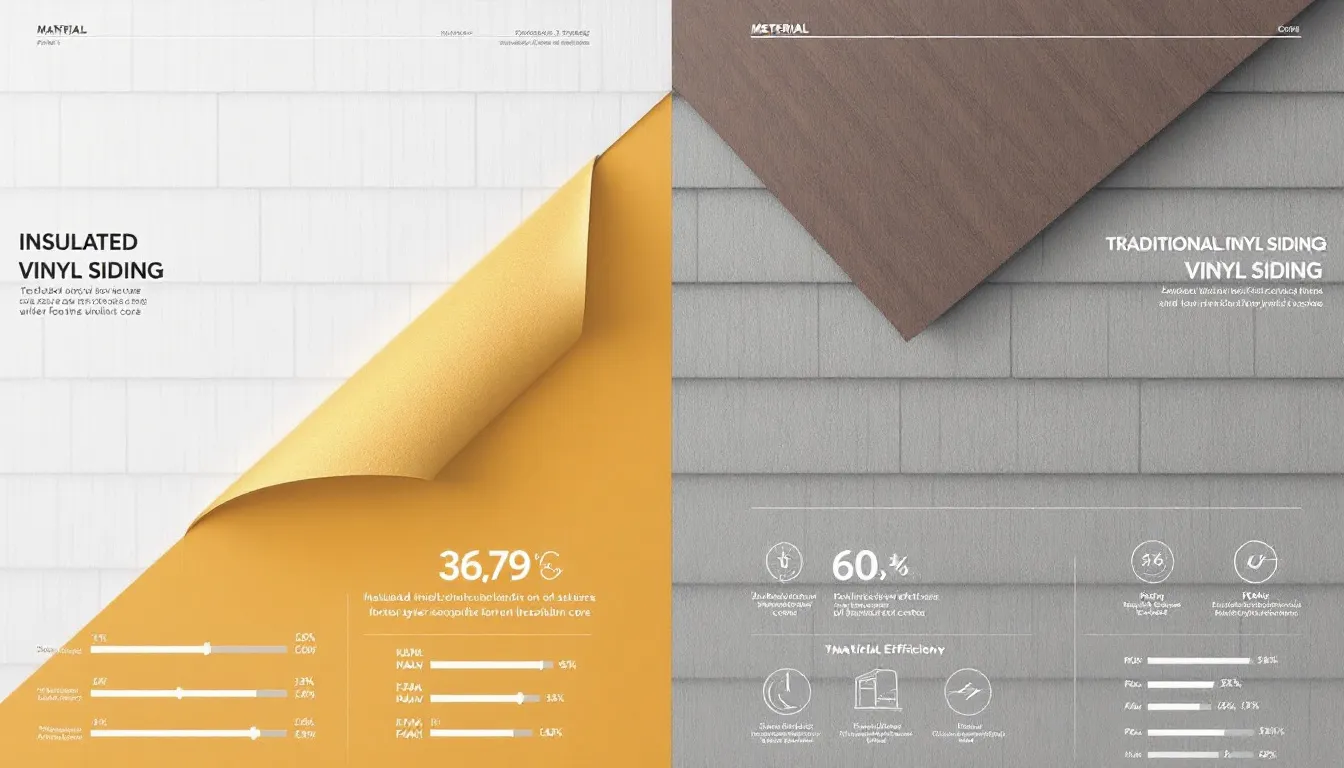
Insulated vinyl siding typically costs about 25% to 50% more than traditional vinyl siding. While the initial investment is higher, the long-term benefits often justify the extra expense.
We’ll compare the initial costs and long-term savings of insulated vinyl siding versus traditional vinyl siding to help you make an informed decision.
Initial Costs
The installation of insulated vinyl siding typically costs between $6,000 and $20,000 for an average home. This range reflects the higher initial investment required compared to traditional vinyl siding, which can be about 50% less expensive. However, it’s essential to weigh this higher cost against the benefits of improved energy efficiency and durability.
While premium insulated vinyl siding options can substantially increase project costs, lower-quality materials may reduce expenses but come with shorter lifespans. Consider the long-term value and performance when choosing your siding material.
Insulated vinyl siding is generally more affordable than other materials like fiber cement, wood, stone, and brick, making it a cost-effective choice for many homeowners. Insulated siding offers additional benefits in energy efficiency.
Long-Term Savings
One of the significant advantages of insulated vinyl siding is its long-term savings potential, which includes:
- Superior insulation that significantly improves energy efficiency, reducing heating and cooling costs.
- A noticeable reduction in utility bills, contributing to overall savings.
- Enhanced durability that means fewer repairs and replacements, saving homeowners money over time.
The combined energy savings from reduced utility bills and the longevity of insulated vinyl siding can lead to significant cost savings over the years. This makes insulated vinyl siding a wise investment, as the initial higher cost is offset by the long-term financial benefits.
Benefits of Insulated Vinyl Siding
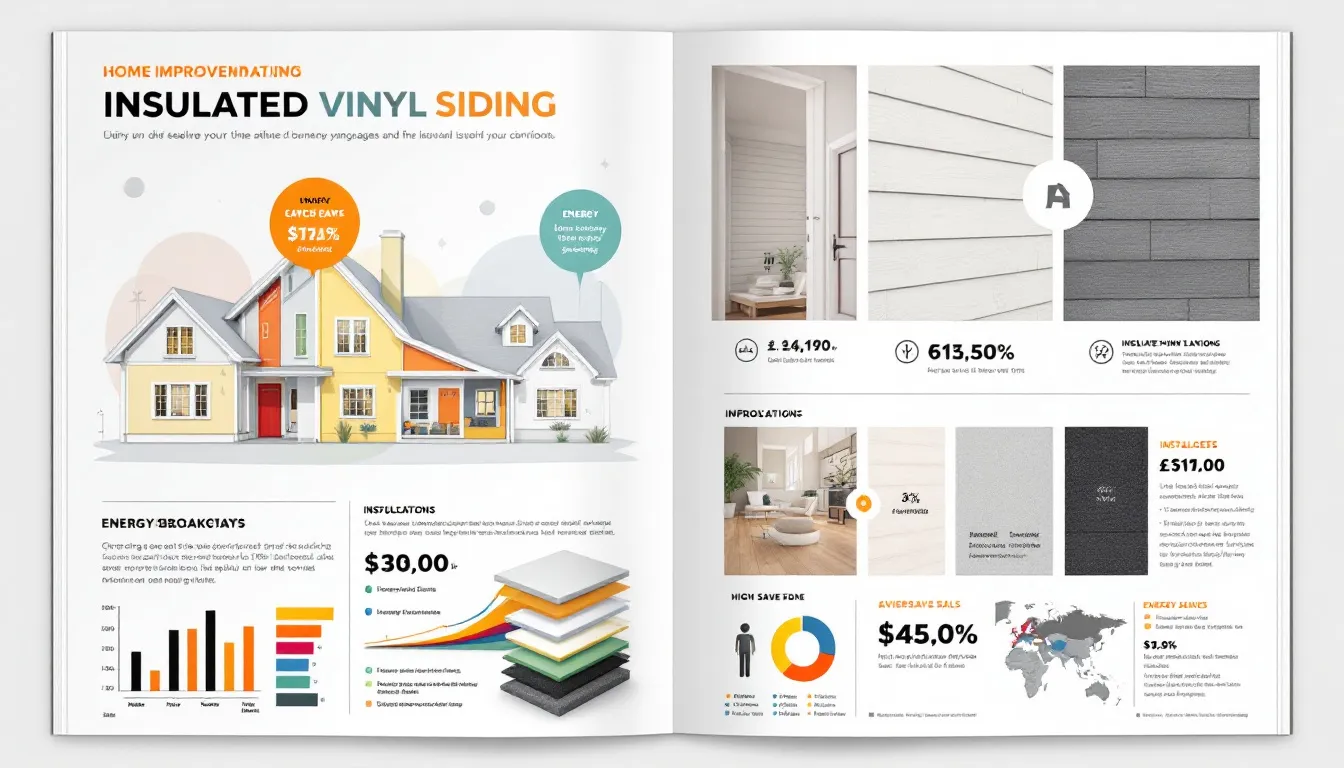
Insulated vinyl siding offers numerous benefits that extend beyond cost savings. From increased energy efficiency and enhanced durability to improved appearance, this siding option provides a comprehensive solution for homeowners looking to upgrade their home’s exterior.
These benefits are explored in more detail below.
Energy Efficiency
Insulated vinyl siding is designed to improve the energy efficiency of homes, directly contributing to reduced utility bills. Homeowners can expect:
- Savings of up to 30% on energy bills due to the enhanced insulation properties of insulated vinyl siding.
- Maintenance of a comfortable indoor temperature year-round by keeping heat in during winter and out during summer.
- Reduced workload on HVAC systems thanks to better temperature regulation.
Higher R-values in insulated vinyl siding indicate better insulation performance, maintaining indoor temperature more effectively. Overall, insulated vinyl siding offers better energy savings over time compared to traditional options, making it a wise investment for homeowners looking to reduce energy consumption and save money on utility bills.
Durability and Protection
High-quality insulated vinyl siding typically costs more due to its superior durability and energy efficiency compared to standard options. The structural integrity of insulated vinyl siding prevents it from warping or sagging, even under harsh weather conditions. This durability means that homeowners can enjoy a long-lasting exterior that requires minimal maintenance.
Insulated vinyl siding also provides excellent protection against pests and mold, thanks to its non-organic materials and flush style that leaves no entry points for bugs. This added protection keeps your home in good condition for years, reducing the need for costly repairs and replacements.
Improved Appearance
Insulated vinyl siding offers customizable options, including various colors and textures, enhancing the aesthetic appeal of homes. Homeowners can personalize their exterior to match their style preferences, enhancing visual appeal. The combination of aesthetic advantages and improved energy efficiency makes insulated vinyl siding a valuable investment for homeowners looking to enhance their property.
The various colors and textures available with insulated vinyl siding allow homeowners to create a beautiful exterior that stands out. This improved appearance not only boosts curb appeal but also increases the market value of your home, making it a smart choice for those looking to sell their property in the future.
Additional Costs to Consider
When planning for an insulated vinyl siding project, it’s essential to consider additional costs that may arise. These can include the removal of old siding, supplementary materials, and ongoing maintenance.
Accounting for these costs helps you create a more accurate budget and avoid unexpected expenses.
Removal of Old Siding
Removing existing siding can incur significant costs, as it requires careful labor and disposal methods. Labor costs for removing old siding typically depend on the type of siding, its condition, and the complexity of the structure.
Consider additional costs for disposing of removed materials, which can vary based on local regulations and waste management services.
Additional Materials
Beyond the siding itself, additional materials like specialized fasteners, trim, and vapor barriers are required during installation. These supplementary materials can significantly add to the overall expense of installing insulated vinyl siding. The cost of additional materials, such as nails and trim, can range from $0.50 to $1.50 per linear foot.
Maintenance Costs
Maintaining insulated vinyl siding is generally less expensive than traditional siding materials. Annual maintenance typically includes cleaning and inspection, costing around $100 to $300 each year. Ongoing maintenance is crucial for preserving the siding’s appearance and functionality, ensuring continued energy efficiency and protection against the elements.
Is Insulated Vinyl Siding Worth the Investment?
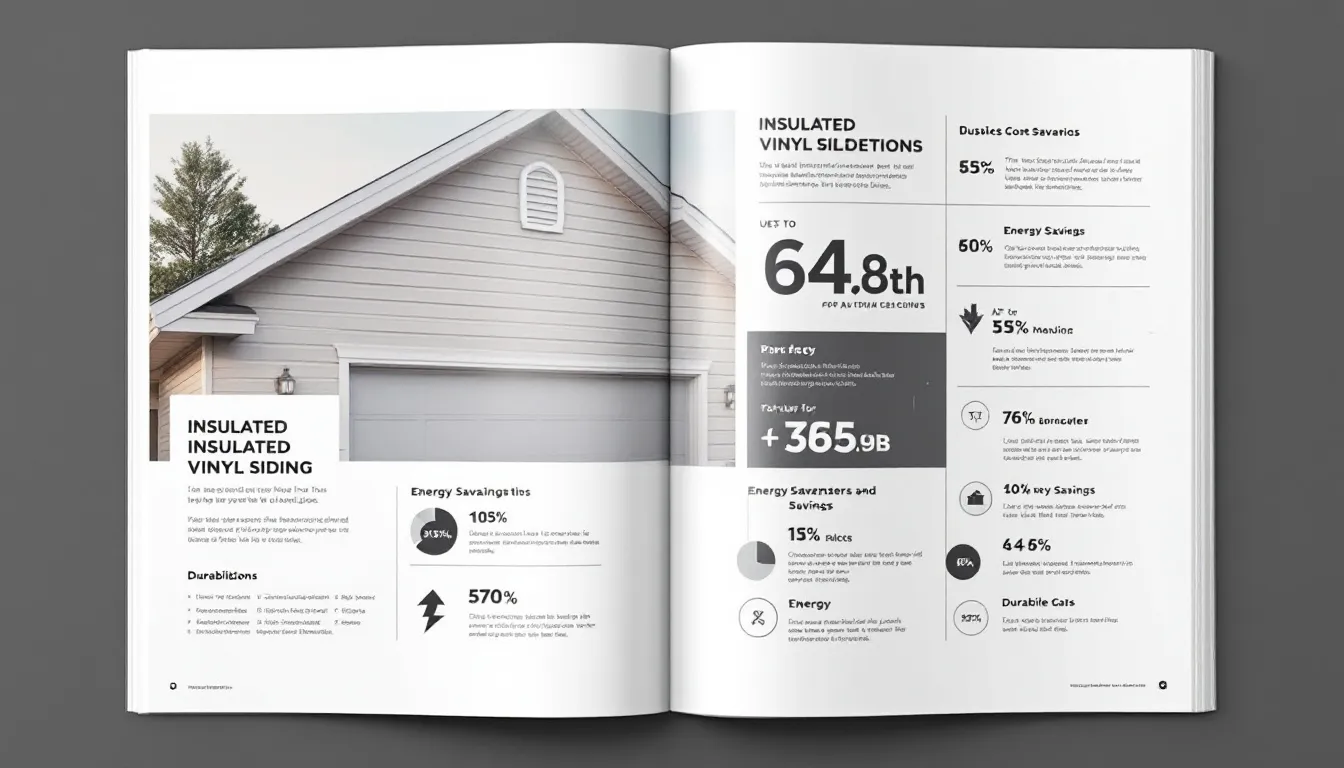
Investing in insulated vinyl siding is justified by the long-term savings and overall satisfaction reported by homeowners. While the initial cost is higher compared to traditional options, the benefits of improved energy efficiency, durability, and aesthetic appeal make it a worthwhile investment.
We’ll delve into the return on investment and the peace of mind it offers.
Return on Investment
Insulated vinyl siding typically has higher upfront costs but offers additional energy savings over time. Lower energy costs from improved insulation contribute to a favorable return on investment.
By reducing the workload on HVAC systems and substantially increasing the R-value of a home, insulated vinyl siding enhances its insulation properties and overall value.
Peace of Mind
Homeowners frequently report improved comfort levels in homes equipped with insulated vinyl siding. This siding also offers less external noise intrusion, a major benefit for families living in high-traffic areas.
The combination of these factors provides homeowners with peace of mind, knowing they have invested in a high-quality, durable, and energy-efficient solution.
Finding the Right Contractor
Identifying a reliable contractor can significantly impact the success of your insulated vinyl siding project. It’s essential to verify that contractors have the necessary licenses and insurance before hiring them for your siding project.
This section guides you through researching and reviewing contractors, obtaining quotes, and asking the right questions.
Research and Reviews
Reading customer reviews can help gauge a contractor’s reliability and quality of work before making a hiring decision. Online reviews and testimonials provide insights into a contractor’s quality of work and customer satisfaction.
Examining customer feedback and obtaining referrals are crucial for understanding the experience and reliability of contractors.
Obtaining Quotes
To receive precise estimates, it’s advisable to obtain quotes from multiple contractors and compare their prices and services. Most people find that the best way to obtain multiple quotes allows homeowners to compare prices and services effectively, leading to better hiring decisions.
Contacting several contractors provides a variety of cost estimates and reveals the range of services each offers.
Questions to Ask
Inquire about the contractor’s experience with insulated vinyl siding specifically, as it requires different expertise than standard siding. Inquiring about a contractor’s experience ensures they have the requisite knowledge and skills for your project.
Additionally, inquire about their insurance coverage to ensure protect against potential damage during the project.
Summary
Understanding the costs and benefits of insulated vinyl siding is crucial for homeowners considering this upgrade. While the initial investment is higher compared to traditional vinyl siding, the long-term savings in energy efficiency, reduced maintenance costs, and enhanced durability make it a worthwhile investment. The aesthetic improvements and increased home value further justify the choice.
Choosing the right contractor is essential for a successful insulated vinyl siding installation. By conducting thorough research, comparing quotes, and asking the right questions, homeowners can ensure they hire a reliable and experienced professional. Ultimately, the peace of mind, energy savings, and improved comfort levels make insulated vinyl siding a smart choice for any homeowner.
